
Overwhelm – When Your Mind Feels Like a Ton of Bricks Just Fell On It
Understanding and Managing Overwhelm: A Guide for Scam Survivors
Primary Category: Scam Victim Recovery Psychology
Authors:
• Vianey Gonzalez B.Sc(Psych) – Licensed Psychologist, Specialty in Crime Victim Trauma Therapy, Neuropsychologist, Certified Deception Professional, Psychology Advisory Panel & Director of the Society of Citizens Against Relationship Scams Inc.
• Tim McGuinness, Ph.D., DFin, MCPO, MAnth – Anthropologist, Scientist, Polymath, Director of the Society of Citizens Against Relationship Scams Inc.
Author Biographies Below
About This Article
Overwhelm, a common experience for scam victims, is a complex psychological and neurological response to trauma and stress. This explores the nature of overwhelm, its effects on the mind and body, and provides practical strategies for recognition, immediate relief, and long-term prevention. By understanding the signs of overwhelm, such as racing thoughts and difficulty concentrating, individuals can take proactive steps to manage their well-being. This emphasizes the importance of self-compassion, setting boundaries, and building resilience through daily habits and support systems. It also addresses the interplay between overwhelm and other mental health challenges, such as anxiety and depression, and offers a 5-minute drill and recovery strategies for immediate relief. By integrating these insights and techniques, individuals can develop a comprehensive approach to managing overwhelm, fostering a sense of control and balance in their lives.
Note: This article is intended for informational purposes and does not replace professional medical advice. If you are experiencing distress, please consult a qualified mental health professional.

Understanding and Managing Overwhelm: A Guide for Scam Survivors
Author’s Note
Overwhelm is a pervasive and often debilitating psychological and physiological experience that many individuals face, particularly those who have endured traumatic events such as being scammed. This psychological and neurological phenomenon can significantly impact one’s ability to function, both mentally and physically, and find peace. For scam victims, the betrayal and loss can lead to a profound sense of disorientation and emotional exhaustion. Understanding the nature of overwhelm, its effects, and effective strategies for management is crucial for those on the path to recovery.
This may provide scam victims with a deeper understanding of overwhelm, offering insights into its psychological and neurological underpinnings, as well as practical techniques for recognizing and addressing it. By exploring the signs and symptoms of overwhelm, as well as strategies for immediate relief and long-term prevention, we aim to empower traumatized scam victims to take control of their healing journey.
Whether you are currently feeling overwhelmed or seeking to prevent future episodes, the information and techniques provided here may serve as a valuable resource on your path to resilience and recovery.
Lic. Vianey Gonzalez
Prof. Tim McGuinness, Ph.D.
Do You Feel Overwhelmed?
You have been through a lot. After a scam, your body and mind work tirelessly to keep you safe. Sometimes, the weight of your experiences can feel too heavy to bear all at once. That is ‘overwhelm’. It is a natural response to the immense stress and trauma you have endured. Overwhelm is not a sign of weakness or failure; rather, it is your body’s way of signaling that it needs care and support. In this guide, you will gain a deeper understanding of what overwhelm is, exploring its psychological and neurological impacts on your brain and body. You will learn to recognize the early warning signs and develop effective strategies to calm your system quickly. Additionally, you will discover simple, daily habits that can help lower your stress levels before they accumulate, promoting a sense of balance and control in your life.
What Overwhelm Is
Overwhelm is a state that occurs when the demands placed upon your brain and mind, whether they are emotional, physical, or psychological, exceed your current capacity to cope. It is a natural response to an accumulation of stress, tasks, or feelings that your mind and body cannot process all at once. When you are overwhelmed, your mind attempts to juggle too many concerns simultaneously, leading to a sense of chaos and confusion. Your body, in turn, prepares for what it perceives as a threat, activating its survival mechanisms to protect you.
For scam survivors, the experience of overwhelm is often intensified by the unique challenges they face. The flood of emotions can be overwhelming, encompassing shock, grief, fear, and financial stress, all compounded by the daunting task of repair and recovery. Your brain, in its effort to protect you, treats these experiences as threats, triggering a strong survival response. This response, while beneficial in the short term, can become exhausting and debilitating if sustained over time.
The neurological and psychological impacts of overwhelm are profound. Your brain’s prefrontal cortex, responsible for decision-making and emotional regulation, may become less active, making it harder to think clearly and make rational choices. Meanwhile, the amygdala, the part of the brain that processes emotions and triggers the “fight or flight” response, can become hyperactive, leading to heightened anxiety and stress. This imbalance can result in a range of physical symptoms, including increased heart rate, muscle tension, and digestive issues, as your body remains in a state of heightened alertness.
Overwhelm is not a sign of weakness or failure; it is a natural and adaptive response to the extraordinary circumstances you have faced. It is your body’s way of telling you that it needs a break, that the current demands are too much to bear alone. Recognizing and acknowledging this state is the first step toward managing it effectively. By understanding what overwhelm is and how it affects you, you can begin to develop strategies to reduce its impact and regain a sense of control and balance in your life.
How Overwhelm Affects Scam Victims
For scam victims, overwhelm can be especially challenging. Betrayal trauma, which comes from trusting someone who then hurts you, can leave deep emotional wounds. These wounds can make it harder to trust others and yourself, leading to more stress and overwhelm.
You might find yourself reliving the scam over and over in your mind, trying to make sense of what happened. This can be exhausting and make it hard to focus on the present. You might also feel isolated, like no one understands what you’re going through, which can make overwhelm even worse.
Physical symptoms of overwhelm can include headaches, stomachaches, and trouble sleeping. You might feel restless or have a hard time relaxing. These physical signs are your body’s way of telling you that something is not right, and it’s time to take a break.
The Psychological View
From a psychological view, overwhelm is a stacked stress reaction. Your thoughts run fast, and your mind races through a multitude of concerns, making it difficult to focus on any one thing. This cognitive overload is a natural response to the intense stress and trauma you’ve experienced. Your mind scans for danger, constantly on the lookout for potential threats, even when none are present. This hypervigilance is a protective mechanism, but it can become exhausting and debilitating over time.
You may find yourself replaying past events, trying to make sense of what happened. This rumination is your mind’s attempt to process and understand the trauma, but it can lead to a cycle of anxiety and distress. Additionally, you might predict more harm, anticipating future threats and challenges. This forward-looking anxiety adds another layer of stress, making it feel like you’re constantly preparing for the worst.
Your mind tries to control all of these thoughts and feelings at once, but when the load grows too big, it pushes you to stop, hide, or shut down. This is a protective move, a way for your brain to take a break from the overwhelming influx of information and emotion. It’s your mind’s way of saying, “Enough is enough.”
This psychological response is not a sign of weakness but rather a natural and adaptive reaction to the extraordinary circumstances you have faced. By understanding this process, you can begin to work with your mind rather than against it. You can start by shrinking the load, breaking down your tasks and thoughts into smaller, more manageable pieces. Taking one clear step at a time can help you regain a sense of control and reduce the feeling of being overwhelmed.
Remember, it’s okay to ask for help and to take things slow. You are not alone in this journey, and there are many resources and strategies available to support you as you navigate through this challenging time.
The Neurological View
Your brain and nervous system are the conductors of this complex process, orchestrating your body’s response to stress and trauma. During overwhelm, a cascade of neurological events unfolds, each contributing to the sense of being flooded and out of control. The amygdala, a small almond-shaped structure deep within your brain, plays a central role. It is responsible for processing emotions and triggering the “fight or flight” response. When you experience overwhelm, the amygdala becomes hyperactive, interpreting even minor stressors as significant threats. This heightened sensitivity can lead to a constant state of alertness, where your body is primed for action, even when there is no immediate danger.
Simultaneously, the prefrontal cortex, the part of your brain responsible for decision-making, emotional regulation, and logical thinking, may become less active. This shift can make it challenging to think clearly, make rational choices, and manage your emotions effectively. The imbalance between the amygdala and the prefrontal cortex creates a perfect storm, where your emotional responses overwhelm your ability to reason and plan. Your brain’s executive functions, which include focusing attention, planning, and organizing, can become compromised, leaving you feeling scattered and unable to prioritize your tasks.
The hypothalamus-pituitary-adrenal (HPA) axis, a complex set of direct influences and feedback interactions among the hypothalamus, the pituitary gland, and the adrenal glands, also comes into play. When you are overwhelmed, this axis is activated, leading to the release of stress hormones like cortisol and adrenaline. These hormones prepare your body for a “fight or flight” response, increasing your heart rate, blood pressure, and muscle tension. While this response is beneficial in short bursts, prolonged activation can lead to chronic stress, affecting your sleep, appetite, and overall well-being.
Furthermore, the autonomic nervous system, which regulates involuntary bodily functions, shifts into a state of imbalance. The sympathetic nervous system, responsible for the “fight or flight” response, becomes dominant, while the parasympathetic nervous system, which promotes relaxation and rest, is suppressed. This imbalance can result in a range of physical symptoms, including rapid breathing, digestive issues, and a heightened startle response. Your body remains in a state of heightened alertness, making it difficult to relax and recover.
Understanding these neurological processes can provide insight into why you feel the way you do during overwhelm. It is a natural response to the intense stress and trauma you have experienced, and recognizing this can be the first step toward managing it effectively. By acknowledging the neurological underpinnings of overwhelm, you can begin to develop strategies to support your brain and nervous system, promoting a sense of balance and control in your life.
The Mechanics of Neurological Overwhelm
Your brain and nervous system guide this whole process. Here is what often happens during overwhelm:
THE THREAT ALARM
-
- The amygdala is your brain’s smoke detector. It looks for danger and rings the alarm.
- When it rings, your body releases stress hormones like adrenaline and cortisol. Your heart beats faster. Your breathing speeds up. Your muscles tense.
- This is the fast survival state.
THE THINKING BRAKE
-
- The prefrontal cortex helps you plan, organize, focus, and make careful choices. During strong stress it can go quiet for a while. That is why it is hard to decide, remember steps, or finish tasks when you feel flooded.
- The hippocampus helps form and file memories. High stress can make it harder to lay down clear memories or find the right words. You may lose your place, forget a name, or repeat work.
THE BODY WIRING
-
- Your autonomic nervous system has two main parts. The sympathetic system revs you up to fight or run. The parasympathetic system helps you rest, digest, and heal. In overwhelm, the rev-up system often dominates.
- The vagus nerve is the main pathway of the parasympathetic system. It runs from your brainstem down through your face, throat, heart, lungs, and gut. When your vagus nerve is calm and active, your heart rate slows, your breath deepens, and your body gets the message that you are safe. When stress is high, vagal tone can drop. Your body may stay stuck in a high alert state or flip into a shut-down freeze.
- You can gently nudge the vagus nerve toward calm with breath work, humming, low voice singing, slow chewing, safe social contact, and brief temperature shifts like cool water on your face.
COGNITION DURING OVERWHELM
-
- Attention: Your attention narrows to threats. It is hard to stay with one task. Alerts and noises pull you away.
- Working memory: Holding steps in mind gets harder. Multi-step tasks feel like a maze.
- Executive function: Planning, starting, switching, and stopping tasks all take more effort.
- Processing speed: Everything feels slow or scattered. Reading the same line again and again is common.
- Language: Word-finding can stall. Names and simple terms can vanish for a moment.
- Decision making: Choices feel risky or foggy. You may avoid, rush, or freeze.
None of this means you are broken. It means your brain is doing its best to protect you. When you send your body strong safety signals, the alarm can ease and your thinking skills come back online.
How Overwhelm Starts to Build
Overwhelm often creeps in gradually, like a rising tide, and recognizing its early signs is crucial because addressing it early is often more effective. Initially, you might notice subtle changes in your thinking patterns and emotional responses. Your mind starts to race with concerns, and you find yourself constantly scanning for potential threats or problems. This hypervigilance is your brain’s way of trying to protect you, but it can quickly become exhausting.
As overwhelm begins to build, you may start to replay past events, especially the scam, trying to make sense of what happened. This rumination is a common coping mechanism, but it can lead to a cycle of anxiety and distress. You might also find yourself predicting future harms, anticipating more losses or betrayals. These predictions can be driven by a sense of uncertainty and a fear of the unknown, further fueling your anxiety.
Physically, you might experience symptoms such as increased heart rate, muscle tension, or digestive issues. These physical manifestations are your body’s response to the stress and can serve as early warning signs that overwhelm is on the rise. Emotionally, you may feel a range of intense emotions, from fear and anger to sadness and guilt. These emotions can be overwhelming on their own, and when combined, they can lead to a sense of being flooded and out of control.
Your mind, in its effort to manage all of these thoughts and feelings, may start to push you to take protective actions, such as withdrawing from social situations, avoiding tasks, or shutting down emotionally. These behaviors are your brain’s way of trying to reduce the cognitive load, but they can also contribute to a sense of isolation and further overwhelm.
Understanding these early signs is key to managing overwhelm effectively. By recognizing the subtle changes in your thoughts, emotions, and behaviors, you can take proactive steps to address them before they escalate. This might involve practicing mindfulness, seeking support, or implementing stress-reduction techniques. The earlier you intervene, the better equipped you will be to handle the challenges that come with overwhelm.
The Signs of Overwhelm
Overwhelm often creeps in. Early signs matter because early steps work best.
BODY SIGNS
-
- Tight jaw, neck, or shoulders
- Shallow chest breathing
- Cold hands or shaky hands
- Headache or stomach flips
MIND SIGNS
-
- Racing thoughts or sticky thoughts
- Starting many tasks and finishing none
- Losing words or losing your place
- Reading without taking in the words
EMOTION SIGNS
-
- Feeling numb or feeling everything at once
- Snapping at small things
- A strong urge to hide or run
How to Know If Your Mind and Brain Are Overwhelmed
Recognizing overwhelm is the first step to managing it effectively. Your mind and body often provide clear signals when they are struggling to cope with the demands placed upon them. These signals can manifest in various ways, and being attuned to them can help you take timely action to prevent overwhelm from escalating. By understanding the signs and symptoms, you can better navigate the challenges that come with feeling overwhelmed and develop strategies to regain control and balance in your life.
Recognizing Overwhelm
Recognizing overwhelm is the first step to managing it. Here are some signs to look out for:
- Racing Thoughts: When your mind is going a mile a minute, and you can’t seem to slow down, it’s a sign of overwhelm.
- Difficulty Concentrating: If you’re having a hard time focusing on tasks, even simple ones, it might be because your brain is overwhelmed.
- Emotional Exhaustion: Feeling drained and unable to cope with your emotions is a common sign.
- Physical Tension: Tight muscles, especially in your shoulders and neck, can indicate that your body is under stress.
- Irritability: Feeling easily annoyed or angry at small things can be a sign that you’re overwhelmed.
- Sleep Problems: Trouble falling asleep, staying asleep, or waking up feeling unrested can all be linked to overwhelm.
- Avoidance: If you find yourself avoiding tasks or situations that you used to handle easily, it might be because you’re feeling overwhelmed.
- Lack of Motivation: Losing interest in activities you used to enjoy can be a sign that you’re overwhelmed.
- Feeling Disconnected: You might feel like you’re not fully present in your own life, as if you’re watching yourself from outside your body.
- Memory Issues: Having trouble remembering things or feeling foggy-headed can be a sign that your brain is overwhelmed.
How to Reduce Overwhelm in the Moment
When you find yourself in the grip of overwhelm, it’s crucial to act swiftly to regain a sense of control and calm. The techniques you choose can make a significant difference in how quickly you can find relief and stability. These strategies are designed to be accessible and effective, providing you with the tools you need to manage overwhelming feelings in the moment. By incorporating these techniques into your toolkit, you can better navigate the challenges of overwhelm and return to a state of balance and clarity.
When You Feel Overwhelmed
When you feel overwhelmed, it’s important to take action right away. Here are some techniques that can help you regain control:
- Deep Breathing: Take slow, deep breaths. Inhale for a count of four, hold for four, and exhale for four. This helps to calm your nervous system and slow down your racing thoughts. You can also try the 4-7-8 breathing technique, where you inhale for 4 seconds, hold for 7, and exhale for 8. This can help you feel more centered and calm.
- Grounding Techniques: Focus on your senses. Name five things you can see, four things you can touch, three things you can hear, two things you can smell, and one thing you can taste. This brings you back to the present moment and can help you feel more in control. Another grounding technique is to hold an ice cube in your hand and focus on the sensation of the cold and the way it melts.
- Mindful Movement: Gentle stretching or yoga can help release physical tension and calm your mind. Even a short walk can make a big difference. Try to focus on the sensation of your feet hitting the ground and the rhythm of your breath as you move. This can help you feel more connected to your body and less caught up in your thoughts.
- Progressive Muscle Relaxation: Tense and then relax each muscle group in your body, starting from your toes and working your way up to your head. This helps to release physical tension and promote relaxation. You can do this lying down or sitting comfortably. Take your time with each muscle group, really feeling the tension and then the release.
- Journaling: Write down your thoughts and feelings. Getting them out of your head and onto paper can make them feel more manageable. You can write about what’s overwhelming you, or you can try stream-of-consciousness writing, where you just let your thoughts flow without judging them. This can help you process your emotions and gain some clarity.
- Talk to Someone: Reach out to a friend, family member, or support group. Sometimes, just expressing what you’re going through can make it feel less daunting. You don’t have to go through this alone, and talking to someone who understands can provide a lot of relief.
- Practice Self-Compassion: Be kind to yourself. Acknowledge that you’re going through a tough time and that it’s okay to feel overwhelmed. Treat yourself with the same kindness and understanding you would offer to a good friend. You might say to yourself, “I’m doing the best I can, and that’s enough.”
- Use Positive Affirmations: Repeat positive statements to yourself, such as “I am strong,” “I can handle this,” or “I am safe and supported.” These affirmations can help shift your mindset from one of overwhelm to one of resilience and capability.
- Engage in a Calming Activity: Do something that you find soothing, like listening to calming music, taking a warm bath, or spending time in nature. These activities can help you feel more relaxed and less overwhelmed. Even a few minutes of deep relaxation can make a big difference.
- Create a Safe Space: Find a quiet, comfortable place where you can be alone and feel safe. This could be a cozy corner of your room, a favorite chair, or even a spot outside in your garden. Having a safe space to retreat to can provide a sense of security and control.
How to Tell Overwhelm From Other States
Overwhelm and Anxiety
Anxiety and overwhelm are two distinct yet often intertwined experiences that can significantly impact your well-being. Anxiety is characterized by a persistent fear of what might happen in the future, a constant worry about potential threats and uncertainties. It is a forward-looking emotion, where your mind is preoccupied with anticipating and preparing for imagined or real future challenges. This can lead to a state of heightened alertness and restlessness, as your body remains in a constant state of readiness for potential danger.
On the other hand, overwhelm is a response to the present moment, occurring when the demands and stressors you are currently facing feel too much to handle. It is a here-and-now experience, where your mind and body are flooded with too many tasks, thoughts, or emotions all at once. Unlike anxiety, which is about the unknown future, overwhelm is about the overwhelming present, where you feel like you are drowning in the sheer volume of what you are dealing with right now.
It is entirely possible, and even common, to experience both anxiety and overwhelm simultaneously. The constant worry about the future can exacerbate your feelings of being overwhelmed in the present, creating a vicious cycle where one feeds into the other. When you find yourself in this state, it is important to address both aspects. If your thoughts are telling you that everything is “too much,” the first step is to shrink the load. Break down your tasks and responsibilities into smaller, more manageable pieces. This can help you feel less daunted and more in control of the situation.
Additionally, using body-based tools can be incredibly effective in managing both anxiety and overwhelm. Techniques such as deep breathing, progressive muscle relaxation, and mindfulness can help you ground yourself in the present moment, reducing the physical symptoms of anxiety and providing a sense of calm. By focusing on your breath and the sensations in your body, you can shift your attention away from the racing thoughts and worries, allowing your mind and body to relax and regain balance.
Overwhelm and Depression
Depression and overwhelm are both challenging experiences, but they manifest differently and require distinct approaches to management and support. Depression is often characterized by a persistent low mood that lingers for extended periods, typically lasting two weeks or more. It is marked by a pervasive sense of sadness, hopelessness, and a lack of energy, which can make even the simplest tasks feel insurmountable. Individuals experiencing depression may also notice a significant loss of interest in activities they once enjoyed, a symptom known as anhedonia. This loss of pleasure and motivation can further exacerbate feelings of isolation and despair.
In contrast, overwhelm is often described as a sudden and intense feeling of being flooded with too much information, emotion, or responsibility all at once. It is a state of acute stress where your mind and body are struggling to cope with the present demands, leading to a sense of chaos and disorientation. Overwhelm can feel like a storm that hits you unexpectedly, leaving you disoriented and unable to focus. Unlike depression, which is more chronic, overwhelm is often more acute and situational, triggered by specific events or circumstances.
It is important to recognize that while depression and overwhelm are different, they can coexist and influence each other. Chronic overwhelm can contribute to the development of depressive symptoms, and depression can make it harder to manage and recover from overwhelming situations. If you find that your low mood and loss of interest persist for two weeks or more, it is crucial to seek support from a healthcare professional. They can provide a thorough evaluation and develop a tailored treatment plan to address your specific needs.
Remember, you do not have to go through this alone. There are many resources and support systems available to help you navigate the challenges of depression and overwhelm. Whether it is through therapy, medication, support groups, or lifestyle changes, there are effective strategies to manage these conditions and improve your overall well-being. Reaching out for help is a sign of strength, and taking that first step can be the beginning of your journey toward healing and resilience.
Overwhelm and Burnout
Burnout and overwhelm, while related, are distinct experiences that require different approaches to understanding and management. Burnout is a gradual process that develops over time, often as a result of prolonged stress without adequate rest or recognition. It is characterized by a deep sense of emotional exhaustion, cynicism, and a reduced sense of personal accomplishment. Individuals experiencing burnout may feel detached from their work, their relationships, and even from themselves, leading to a persistent feeling of emptiness and disconnection. This state can be particularly challenging because it builds insidiously, eroding one’s sense of purpose and fulfillment over an extended period.
In contrast, overwhelm is often more acute and episodic, capable of coming and going within a single day. It is a response to immediate, intense stressors that can feel like a flood of demands and emotions all at once. While overwhelming, these episodes are typically shorter in duration and can be managed with immediate coping strategies and self-care techniques. However, if you find that you are experiencing a prolonged sense of emptiness and distance, it may be a sign that you are moving towards burnout, and deeper recovery steps may be necessary.
To address burnout, it is essential to take a holistic approach that includes setting boundaries, prioritizing self-care, and seeking professional support if needed. This might involve taking time off work, engaging in activities that bring you joy and fulfillment, and reconnecting with your values and passions. Remember, recovery from burnout is a journey, and it is important to be patient and compassionate with yourself as you navigate this process.
How Overwhelm Affects Sleep, Appetite, and Pain
Overwhelm can have a profound impact on various aspects of your physical and mental well-being, particularly affecting sleep, appetite, and pain perception. Understanding these connections can be invaluable when discussing your experiences with a healthcare professional or counselor, as it provides a comprehensive picture of how overwhelm manifests in your daily life.
Sleep is often one of the first areas to be disrupted by overwhelm. The constant racing thoughts and heightened state of alertness can make it challenging to fall asleep, stay asleep, or achieve restful sleep. You might find yourself lying awake at night, replaying the day’s events or worrying about future challenges. This lack of quality sleep can lead to a cycle of fatigue and increased stress, further exacerbating feelings of overwhelm. When you are overwhelmed, your body’s stress response is activated, releasing hormones like cortisol and adrenaline, which can interfere with your natural sleep-wake cycle.
Appetite changes are another common symptom of overwhelm. Some people may experience a loss of appetite, leading to skipped meals and potential nutritional deficiencies. This can be a result of the body’s “fight or flight” response, where digestion is temporarily halted to conserve energy for more immediate needs. Conversely, others may turn to comfort eating as a coping mechanism, leading to overeating and potential weight gain. These changes in eating habits can further impact your energy levels and overall health, creating a feedback loop that makes it harder to manage overwhelm.
Pain perception can also be affected by overwhelm. Chronic stress and the constant state of alertness can lower your pain threshold, making you more sensitive to physical discomfort. This heightened sensitivity can lead to increased reports of headaches, muscle tension, and other aches and pains. Additionally, the emotional and psychological stress of overwhelm can exacerbate existing pain conditions, making them more difficult to manage. This interplay between overwhelm and pain can create a challenging cycle where physical discomfort contributes to emotional distress, and vice versa.
When discussing these issues with your doctor or counselor, it is important to provide a detailed account of how overwhelm affects your sleep, appetite, and pain. This information can help them develop a tailored treatment plan that addresses not only the psychological aspects of overwhelm but also its physical manifestations. By taking a holistic approach, you can work towards improving your overall well-being and better managing the challenges posed by overwhelm.
Identifying Effects
This short section can help you talk with your doctor or counselor.
SLEEP
-
- Trouble falling or staying asleep
- Waking too early
- Nightmares or vivid dreams
- Feeling unrefreshed after sleep
APPETITE
-
- Eating much less or much more than usual
- Cravings for quick sugar or salty foods
- Upset stomach when trying to eat
PAIN AND BODY SYMPTOMS
-
- Headaches or jaw pain from clenching
- Neck, shoulder, or back tension
- Stomach pain, nausea, or bowel changes
- Chest tightness or heart pounding
- Dizziness when standing up fast
What to Track for Your Medical/Psychologist Visit
- A simple daily log with hours slept, meals, pain level, and stress spikes
- Medications, supplements, and caffeine or alcohol use
- Triggers that raised your stress on that day
Bring your notes to your visit. Ask about safe sleep support, gut health, pain care, and stress tools that fit you.
More Overwhelm Tools & Recovery
A self-check is an important tool in managing overwhelm. Regularly assess your stress levels, sleep patterns, and emotional state. Keep a journal to track triggers and responses. Share your observations with your healthcare provider for personalized support and recovery strategies.
Self-Check
If three or more of these are true right now, your system may be overwhelmed:
- My thoughts feel fast or stuck.
- I cannot sort tasks by order.
- My breath is high in my chest.
- My muscles feel tight.
- I want to avoid simple tasks.
- I feel a wave of fear, shame, or anger that will not settle.
In-the-Moment Reset Tools
Pick one or two tools. Keep them short and gentle. The goal is to send “safe” messages to your body.
- Square breathing: Inhale for 4. Hold 4. Exhale 4. Hold 4. Trace a square with your finger as you breathe. Do this for one minute. This balances your heart and calms the alarm.
- Hand on heart: Place your palm over your heart. Breathe slowly. Say, “Right now I am safe. One small step is enough.” The warmth and pressure help your vagus nerve relax your heart.
- 5-4-3-2-1 senses: Name 5 things you see. 4 you can touch. 3 you can hear. 2 you can smell. 1 you can taste. Move your eyes and head as you scan the room. This brings you back to the present.
- Humming and slow exhale: Hum a low, soft tone for 10 to 20 seconds. Then breathe out slowly through pursed lips. Repeat three times. The vibration in your throat and face can activate the vagus nerve.
- Temperature shift: Splash cool water on your face for 30 seconds or hold a cool pack to your cheeks. Or sip a warm drink slowly. A small, safe temperature change can reset your stress response.
- Ground your feet: Stand or sit with both feet flat. Press your toes into the floor for five seconds. Relax for five. Repeat five times. Feel the support under you.
- Name and Tame – Not Shame and Blame: Say, “This is just overwhelm. My body is trying to protect me. I can take one step.” Plain words help the thinking brain return.
- Tiny task: Choose a task under two minutes. Drink water. Put one paper in a folder. Send one short text to a safe person. When finished, pause and notice the win.
- Soft gaze focus: Pick one object. Describe it in simple words for one minute. Color, shape, size, texture. This steady focus slows racing images.
- Co-regulation: If you have a safe person, sit near them or call them. Ask them to speak in a calm, steady voice. Gentle social contact is one of the strongest safety signals for your nervous system.
A 5-Minute Overwhelm Drill
When overwhelm strikes, having a quick and effective drill can make a significant difference in regaining control. This 5-minute overwhelm drill is designed to help you calm your mind and body, providing immediate relief and a clearer perspective. By breaking down the process into manageable minute-long steps, you can address both the physical and mental aspects of overwhelm, allowing you to feel more centered and in command of your situation.
- Minute 1: Square breathing
- Minute 2: 5-4-3-2-1 senses
- Minute 3: Hum and long exhale
- Minute 4: Drink water and unclench your jaw
- Minute 5: Do one tiny task and write one next step
How to Recover After a Spike
After experiencing a spike in overwhelm, your body and mind need gentle aftercare to fully recover and regain balance. This recovery phase is crucial for preventing future spikes and promoting long-term well-being. By taking specific steps to nourish your body, connect with nature, and engage in simple, grounding activities, you can help your system return to a state of calm and clarity.
Your system needs aftercare once the wave eases:
- Eat something with protein and fiber.
- Step outside or look out the window at trees or sky.
- Walk or stretch for five to ten minutes.
- Turn down screen brightness. Mute extra alerts.
- Set two simple tasks for the next hour.
- Say, “That was hard. I am ok now. I helped myself. I can rest now.”
How to Prevent Overwhelm
Preventing overwhelm is a proactive approach that focuses on building resilience and establishing healthy habits to fortify your ability to cope with stress and challenges. By incorporating several key strategies into your daily life, you can create a robust foundation that helps you stay ahead of potential overwhelming situations. One effective strategy is to set clear boundaries, both personally and professionally. This involves learning to say no to commitments that add unnecessary stress and prioritizing your well-being. By being selective about your obligations, you can better manage your time and energy, reducing the likelihood of feeling overwhelmed.
Another crucial aspect of prevention is breaking down large tasks into smaller, more manageable steps. When you approach tasks in this way, they become less daunting and more achievable, which can significantly reduce stress levels. Additionally, maintaining a consistent routine can provide a sense of structure and control, helping you feel more grounded and less susceptible to overwhelm. This might include establishing regular sleep patterns, meal times, and exercise schedules, all of which contribute to your overall well-being.
Practicing self-care is also essential in preventing overwhelm. This includes engaging in activities that you enjoy and that help you relax, such as reading, taking a warm bath, or spending time in nature. Self-care is not a luxury but a necessity, and making time for it can help you recharge and better handle life’s challenges. Furthermore, staying connected with others is vital. Building a strong support network of friends, family, or support groups can provide emotional support and a sense of belonging, which can be a powerful buffer against overwhelm.
Lastly, cultivating mindfulness and stress-reduction techniques can be incredibly beneficial. Practices such as mindfulness meditation, deep breathing, or progressive muscle relaxation can help you stay present and manage stress more effectively. By integrating these practices into your daily life, you can develop a greater sense of awareness and control over your thoughts and emotions, making it easier to navigate challenging situations without becoming overwhelmed.
Prevention Tasks
Preventing overwhelm is all about building resilience and creating healthy habits. Here are some strategies to help you stay ahead of overwhelm:
- Set Boundaries: Learn to say no to tasks or commitments that add too much to your plate. It’s okay to prioritize your well-being. You might feel guilty at first, but remember that taking care of yourself is not selfish; it’s necessary. Start by identifying your limits and communicating them clearly to others.
- Break Tasks Down: Large tasks can feel overwhelming. Break them into smaller, manageable steps and focus on one step at a time. This makes the task feel less daunting and more achievable. You can use a to-do list or a planner to help you stay organized and focused on one thing at a time.
- Practice Self-Care: Make time for activities that you enjoy and that help you relax. This could be reading, taking a bath, or spending time in nature. Self-care is not a luxury; it’s a necessity. Try to schedule self-care activities into your week, just like you would any other important appointment.
- Establish a Routine: Having a daily routine can provide a sense of structure and control. Try to wake up, eat, and go to bed at the same times each day. A consistent routine can help you feel more in control of your life and less overwhelmed by the unknown. Start with small, achievable routines and build from there.
- Stay Connected: Maintain strong social connections. Talk to friends and family regularly, and consider joining a support group for scam victims. Connecting with others who understand what you’re going through can provide a lot of comfort and support. You might find that talking to someone who has been through a similar experience can be very validating and helpful.
- Challenge Negative Thoughts: When you find yourself thinking negatively, try to reframe those thoughts in a more positive or realistic light. For example, instead of “I’ll never get through this,” try “I’m doing the best I can, and that’s enough.” Cognitive Behavioral Therapy (CBT) techniques can be very helpful for this. You can learn to identify and challenge negative thought patterns and replace them with more balanced and realistic thoughts.
- Seek Professional Help: If overwhelm is affecting your daily life, consider talking to a therapist or counselor. They can provide you with additional tools and support. A mental health professional can help you develop coping strategies and provide a safe space for you to process your emotions. Don’t hesitate to reach out for help if you need it.
- Educate Yourself: Learn about betrayal trauma and the healing process. Understanding what you’re going through can make it feel less scary and more manageable. There are many resources available, including books, online articles, and support groups, that can provide you with valuable information and insights.
- Practice Gratitude: Regularly reflect on the things you’re grateful for. This can help shift your focus from what’s going wrong to what’s going right. You can start a gratitude journal, where you write down three things you’re grateful for each day. This simple practice can have a big impact on your overall well-being and resilience.
- Engage in Meaningful Activities: Find hobbies or causes that give you a sense of purpose and fulfillment. This can provide a positive distraction and boost your mood. Whether it’s volunteering, creating art, or learning a new skill, engaging in meaningful activities can help you feel more connected to yourself and others, and less overwhelmed by your circumstances.
- Limit Exposure to News and Social Media: Constant exposure to negative news and social media can increase feelings of overwhelm. Try to limit your intake of news and social media, especially if it’s making you feel more anxious or stressed. Instead, focus on positive and uplifting content that inspires and motivates you.
- Get Enough Sleep: Sleep is crucial for your mental and physical health. Aim for 7-9 hours of sleep per night, and try to maintain a consistent sleep schedule. Good sleep hygiene can help you feel more rested, focused, and better equipped to handle stress and overwhelm. Create a relaxing bedtime routine that helps you wind down and prepare for sleep.
- Eat a Balanced Diet: What you eat can have a big impact on how you feel. Try to eat a balanced diet rich in fruits, vegetables, whole grains, and lean proteins. Avoid excessive caffeine and sugar, as they can contribute to feelings of anxiety and restlessness. Eating well can help you feel more energized and better able to cope with stress.
- Exercise Regularly: Regular physical activity can help reduce stress and improve your mood. Find an exercise you enjoy, whether it’s walking, swimming, or dancing, and make it a regular part of your routine. Even a little bit of exercise can make a big difference in how you feel. Aim for at least 30 minutes of moderate exercise most days of the week.
- Practice Mindfulness and Meditation: Mindfulness and meditation can help you stay present and reduce feelings of overwhelm. There are many apps and online resources available to guide you through mindfulness and meditation practices. Even a few minutes of mindfulness each day can help you feel more centered and in control.
Daily Habits That Prevent Overwhelm
Incorporating daily habits that prevent overwhelm can significantly enhance your ability to manage stress and maintain a balanced life. These habits are designed to be simple yet effective, allowing you to build resilience over time. When starting out, it’s important to choose just two habits to focus on, as this makes it easier to establish a consistent routine without feeling overwhelmed by too many changes at once. As these habits become second nature, you can gradually add more to your repertoire, creating a comprehensive toolkit for preventing overwhelm.
One habit that can be particularly beneficial is starting your day with a brief mindfulness practice, such as a five-minute meditation or deep breathing exercise. This can help you begin your day with a clear and focused mind, setting a positive tone for the rest of your activities. Another effective habit is to schedule regular breaks throughout your day, even if they are just a few minutes long. These short pauses can provide much-needed respite from the constant demands of your environment, allowing you to recharge and refocus.
As you become more comfortable with your initial habits, consider adding physical activity to your routine. Even a short walk or a few stretches can boost your mood and reduce stress levels. Additionally, maintaining a consistent sleep schedule can greatly improve your overall resilience. Aim for seven to nine hours of quality sleep each night, as this can enhance your cognitive function and emotional regulation, making it easier to handle life’s challenges.
Remember, the key to successfully preventing overwhelm is consistency and gradual progress. Start with two habits that resonate with you, and as they become part of your daily life, you can explore adding more. This approach allows you to build a sustainable and effective strategy for maintaining balance and preventing overwhelm in the long term.
Daily Habits
Pick two to start. Add more when you can.
- Gentle morning start: Drink water. Open curtains. Stretch two minutes. Read or write one line in a simple journal. Keep it the same each day to lower decisions.
- Protect your sleep: Keep a steady sleep and wake time. Reduce screens in the last hour. Keep the room dark and cool. If worries rise at night, write them on a notepad and set it aside.
- Nourish your body: Eat regular meals. Include protein. Add color with fruits or vegetables. Carry a snack. Sudden drops in blood sugar can feel like panic.
- Move your body: Ten minutes a day helps. Walk, stretch, light chores. Movement uses stress hormones in a healthy way and lifts mood.
- Careful information intake: Choose two set times to check news or messages. Unfollow trigger accounts. Turn off nonessential alerts. Your attention is precious.
- Two-column planning: On paper draw a line down the middle. Left side: things you can control today. Right side: things outside your control. Put your effort into the left side. Breathe out and release the right side.
- Boundary scripts: Practice short phrases that protect your energy.
“I cannot talk about that right now.”
“I will reply tomorrow.”
“No, thank you.”
Keep them on your phone. Scripts lower stress when you are tired. - Connection appointments: Plan steady contact with safe people. A weekly call. A support group. A short coffee chat. Short and steady beats long and rare.
- Joy vitamins: Plan small, kind moments. Music you love. A warm bath. Time with a pet. Ten minutes with a hobby. Joy is not a luxury. It is brain care.
- Thought care: Use three steps when a harsh thought shows up.
Catch: “Here is the thought that I cannot do this.”
Check: “Is that a fact or a feeling?”
Choose: “New thought. I can do one small step.”
Keep it brief and kind. - Grief room: Set a safe time once a week to feel and release. Ten to twenty minutes. Play a gentle song. Cry if you need to. End with tea or a short walk. Contained grief lowers ‘surprise floods’ later.
- Trigger plans: List your top three triggers. Unknown numbers. Certain dates. News about scams. For each one, write a plan. Unknown numbers go to voicemail. On hard dates, reduce tasks and add support. A plan turns dread into action.
When to Seek More Help
Knowing when to seek more help is an important step in managing overwhelm, especially when it becomes a persistent and debilitating part of your life. If you find that feelings of overwhelm are constant and unrelenting, to the point where they interfere with your ability to manage daily tasks and responsibilities, it is a clear sign that professional support may be necessary. Overwhelm can be a natural response to stress, but when it becomes chronic, it can severely impact your quality of life and overall well-being.
Additionally, if you notice strong urges to withdraw from social interactions or isolate yourself for extended periods, this could be an indication that overwhelm is taking a significant toll on your mental health. Similarly, if you find yourself relying heavily on substances as a coping mechanism, or if you are experiencing ongoing thoughts of self-harm, these are serious warning signs that should not be ignored. These behaviors and thoughts can be indicators of deeper underlying issues that require professional intervention.
If you are in immediate danger or feel that your safety is compromised, do not hesitate to contact local emergency services. Your safety and well-being are paramount, and seeking help in such situations is a courageous and necessary step. Remember, reaching out for professional help is a sign of strength, not weakness. Mental health professionals, including therapists, counselors, and psychiatrists, are equipped with the tools and knowledge to provide you with the support and strategies needed to manage overwhelm and improve your overall mental health.
Moreover, support groups and community resources can offer additional layers of help, providing a safe space to share your experiences and connect with others who may be going through similar challenges. Engaging with these resources can offer a sense of community and understanding, which can be incredibly healing and empowering. By taking these steps, you are investing in your recovery and taking control of your journey towards a healthier, more balanced life.
Frequently Asked Questions
-
Why does overwhelm come back even when I am doing better? – Healing is not a straight line. Triggers and dates can light up the alarm again. This does not erase your progress. Use your plan. The spike will pass.
-
Why do simple tasks feel so hard? – When your thinking center is tired, even small tasks can feel heavy. Break them down. Do two minutes. Rest. Do two more minutes later.
-
Is it okay to avoid some things for now? – Yes. Short, planned pauses protect your energy. Avoidance becomes a problem when it spreads. Use gentle exposure later with support and only at a pace that feels safe.
-
How can I explain this at work or school? – Keep it simple and focused on what helps you function. Examples: “I am managing a health matter. I may need short breaks and a clear list of priorities.” Most people respond well to clear requests.
-
What if I feel guilty for taking care of myself? – Self-care is not a luxury; it’s a necessity. Remember, you cannot pour from an empty cup. Taking time for yourself allows you to be more present and effective in all areas of your life. Guilt is a natural feeling, but it’s important to recognize that prioritizing your well-being is a strength, not a weakness.
-
How can I support a friend who is overwhelmed? – Offer a listening ear and a non-judgmental space for them to express their feelings. Encourage them to seek professional help if needed, and be patient as they navigate their healing journey. Small acts of kindness and understanding can make a significant difference in their recovery process.
-
What are some red flags to watch for in my own behavior? – Pay attention to signs such as increased irritability, changes in sleep patterns, loss of interest in activities you usually enjoy, and a constant feeling of being on edge. These can indicate that overwhelm is becoming a more significant issue and may require additional support or intervention.
-
Can overwhelm affect my relationships? – Yes, overwhelm can impact your relationships, as it may cause you to withdraw, become irritable, or struggle with communication. It’s important to communicate openly with your loved ones about what you’re experiencing and to seek support together, if possible. Maintaining healthy boundaries and practicing self-compassion can also help protect your relationships during challenging times.
Putting It All Together
Overwhelm is a profound signal from your body and brain, a clear message that says, “This is too much for now.” It is your internal alarm, alerting you to the need for a pause, a breath, and a shift in perspective. Recognizing this signal is the first step in managing overwhelm, as it allows you to respond with compassion and action. By acknowledging that your system is overwhelmed, you can begin to address the situation with care, structure, and support.
Start by slowing your breath. Deep, deliberate breathing can help calm your nervous system, reducing the physical symptoms of overwhelm. As you breathe, focus on grounding your body, perhaps by feeling your feet on the floor or your hands on a stable surface. This physical connection to the present moment can help you feel more centered and in control.
Next, take one tiny step. Break down your tasks or thoughts into the smallest, most manageable pieces. Even a small action can provide a sense of accomplishment and progress, which can be incredibly empowering when you feel overwhelmed. Reduce input by limiting your exposure to additional stressors, such as turning off notifications or stepping away from demanding situations.
Ask for help when you need it. Reaching out to friends, family, or professionals can provide you with the support and resources necessary to navigate challenging times. Building small daily habits that prioritize your well-being can also make a significant difference. These habits might include setting aside time for self-care, maintaining a consistent sleep schedule, or engaging in activities that bring you joy and fulfillment.
With practice, your alarm will begin to ring less often and less loudly. You will develop a greater sense of resilience and adaptability, allowing you to handle stress and challenges more effectively. Your focus will grow, and your energy will return as you become more attuned to your needs and better equipped to meet them. Remember, you are not alone in this journey. There are many resources and people available to support you, and you are already moving forward, one step at a time.
Conclusion
Overwhelm is a challenging experience, but it’s also a natural response to the stress and trauma of being scammed. By understanding what overwhelm is, recognizing the signs, and using techniques to reduce and prevent it, you can take control of your healing journey.
Remember, you’re not alone in this. Many scam victims have gone through similar experiences, and there are people and resources available to support you. Be kind to yourself, take things one step at a time, and know that healing is possible.
You’ve already shown incredible strength by seeking out this information. Keep taking small steps forward, and don’t hesitate to reach out for help when you need it. You’ve got this, and brighter days are ahead.

Glossary
- Acceptance — A choice to acknowledge current limits and feelings without judgment. It helps a person pause, reduce inner conflict, and pick a small next step based on what is real rather than what is feared.
- Amygdala — A small brain region that scans for danger and triggers fast survival responses. When highly activated, it increases fear, muscle tension, and rapid breathing, which can make clear thinking harder.
- Anxiety versus overwhelm — Anxiety centers on future threat and constant worry. Overwhelm centers on the present load when too many demands arrive at once. Both can co-occur and increase each other if not addressed.
- Autonomic nervous system — The body’s automatic control network that manages heart rate, breathing, and digestion. It has two main branches that lift energy for action or restore rest and recovery.
- Avoidance — A short-term strategy that reduces distress by stepping back from tasks, places, or topics. It can help for brief recovery, but becomes harmful if it spreads and blocks needed action.
- Boundary scripts — Short prepared phrases that protect time, energy, and attention. They support clear limits and reduce conflict when stress is high.
- Burnout — A slow drain from long stress without rest or recognition. It shows up as exhaustion, detachment, and reduced effectiveness, and it requires deeper recovery and boundaries.
- Catch–check–choose — A three-step thought tool for harsh or fearful thinking. First identify the thought, then test it against facts, and finally select a kinder and more accurate replacement.
- Co-regulation — Calm gained through steady contact with a trusted person. A calm voice, relaxed breathing, or sitting together can reduce body alarm and steady emotions.
- Cognitive overload — A state where tasks, decisions, and worries exceed available mental resources. It reduces focus, slows reading, and increases errors.
- Cortisol — A stress hormone released during threat or heavy demand. Short spikes help with action, while long elevations disrupt sleep, appetite, mood, and memory.
- Depression versus overwhelm — Depression is a persistent low mood with loss of interest and energy over weeks. Overwhelm is an acute flood of demand that may rise and fall in a day. They can overlap and both deserve care.
- Executive function — The set of skills that plan, start, switch, and finish tasks. Under stress, these skills weaken, so small steps and clear lists help performance.
- Freeze response — A protective state where the body slows or shuts down when fight or flight feels impossible. It can look like numbness, blank mind, or stillness and needs gentle reactivation.
- Grounding techniques — Simple actions that bring attention to the present through senses and movement. They reduce racing thoughts and help the thinking brain engage again.
- Hippocampus — A brain area that helps form and organize memories and context. High stress can disrupt word finding and memory filing until calm returns.
- HPA axis — The stress response loop linking the hypothalamus, pituitary, and adrenal glands. It drives the release of stress hormones and settles with rest, safety, and steady routines.
- Hypervigilance — Constant scanning for threat after shock or loss. It drains energy, interrupts sleep, and benefits from planned pauses and safety cues.
- Intrusive thoughts — Unwanted, repetitive images or ideas that jump into awareness. They often fade faster when labeled, written down, and paired with a short grounding practice.
- Journaling — Writing feelings, thoughts, and events to organize the mind. It can reveal triggers, track progress, and prepare clear questions for a clinician.
- Mindful movement — Gentle activity such as walking or stretching done with attention to breath and body sensations. It helps use up stress chemistry and restores a sense of control.
- Overwhelm — A state where emotional, cognitive, or physical demands exceed current capacity. It is a protective alarm that signals the need to slow down, simplify, and restore.
- Paced breathing — Slow, counted breaths that lengthen the exhale to calm the body. It lowers heart rate, reduces tension, and improves focus.
- Parasympathetic nervous system — The rest-and-digest branch that supports recovery, digestion, and sleep. It activates with slow breathing, safe connection, and quiet routines.
- Prefrontal cortex — The brain’s planning and regulation center. Under heavy stress, it can go quiet, which explains foggy thinking and hard decisions.
- Progressive muscle relaxation — A method of tensing and then releasing muscle groups from feet to face. It reduces body tension and signals safety to the nervous system.
- Rumination — Repetitive replay of events to find answers or blame. It increases distress and often eases when time-limited and followed by a small action.
- Self-compassion — A stance of kindness toward one’s limits and pain. It reduces shame and supports steady problem-solving and help-seeking.
- Sensory reset — A brief shift in temperature, texture, sound, or sight to interrupt the alarm. Examples include cool water on the face, a warm drink, or steady music.
- Sleep hygiene — A set of habits that protect sound sleep, such as consistent bedtimes, darker rooms, and lower evening screens. Better sleep improves mood, memory, and pain tolerance.
- Square breathing — A one-minute pattern of inhale four, hold four, exhale four, hold four. Tracing a square while breathing can further steady attention.
- Sympathetic nervous system — The fight-or-flight branch that prepares the body for action. When it dominates too long, it causes restlessness, tight muscles, and short breaths.
- Temperature shift technique — A safe, brief change, such as a cool face splash or a warm cup held with two hands. It can reset the stress response and lower arousal.
- Trauma trigger — A cue that reminds the body of past harm and starts a fast alarm. A plan that names the cue and the first calming step reduces its impact.
- Two-column planning — A simple page split into “can control today” and “cannot control today.” It directs effort to useful actions and helps release what is not actionable.
- Vagal tone — The flexibility and strength of the body’s calming pathway. Better tone supports steadier heart rate, deeper breathing, and faster recovery after stress.
- Vagus nerve — The main parasympathetic nerve that connects the brainstem to the face, heart, lungs, and gut. Humming, longer exhales, slow chewing, and warm social contact help activate it.
- Working memory — The short-term mental workspace used to hold steps and details. Stress shrinks this space, so written checklists and tiny tasks improve follow-through.
Reference
- Balcombe, L. The Mental Health Impacts of Internet Scams. Int. J. Environ. Res. Public Health 2025, 22, 938. https://doi.org/10.3390/ijerph22060938
- Hyperarousal – Cleveland Clinic https://my.clevelandclinic.org/health/symptoms/hyperarousal
- What is the Cause of Hypervigilance? https://www.thebridgetorecovery.com/what-is-the-cause-of-hypervigilance/
- Understanding Hyperarousal Through the Lens of Polyvagal Theory https://www.northbaycounselling.com/understanding-hyperarousal-through-the-lens-of-polyvagal-theory/
- Mind always racing? Here’s why and how to stop racing thoughts https://www.talkiatry.com/blog/racing-thoughts
- What’s the Difference Between Racing Thoughts and Intrusive Thoughts? https://www.charliehealth.com/mental-health/anxiety/racing-thoughts-vs-intrusive-thoughts
- What To Know About Hypervigilance: Causes, Symptoms, and Treatment https://www.health.com/hypervigilance-7095960
- How to Tell the Difference Between Anxiety and Hypervigilance After Trauma https://fourthdimensioncounseling.com/difference-anxiety-hypervigilance/
- Anxiety and Hypervigilance in PTSD https://www.chateaurecovery.com/anxiety-and-hypervigilance-in-ptsd
- Emotional Hyperarousal: Recognizing Symptoms and Finding Relief https://neurolaunch.com/emotional-hyperarousal-symptoms/
- Shutting Down When Overwhelmed https://mhcsandiego.com/blog/shutting-down-when-overwhelmed-adhd/
- Psychologist’s Insights on Hypervigilance: Causes, Symptoms, and Solutions https://www.psychologs.com/psychologists-insights-on-hypervigilance-causes-symptoms-and-solutions/
Author Biographies
Please Rate This Article
Please Leave Us Your Comment Below
Also, tell us of any topics we might have missed.
-/ 30 /-
What do you think about this?
Please share your thoughts in a comment above!
ARTICLE RATING
TABLE OF CONTENTS
CATEGORIES
U.S. & Canada Suicide Lifeline 988
![NavyLogo@4x-81[1] Overwhelm - When Your Mind Feels Like a Ton of Bricks Just Fell On It - 2025](https://scamsnow.com/wp-content/uploads/2025/04/NavyLogo@4x-811.png)
ARTICLE META
Important Information for New Scam Victims
- Please visit www.ScamVictimsSupport.org – a SCARS Website for New Scam Victims & Sextortion Victims.
- SCARS Institute now offers its free, safe, and private Scam Survivor’s Support Community at www.SCARScommunity.org – this is not on a social media platform, it is our own safe & secure platform created by the SCARS Institute especially for scam victims & survivors.
- SCARS Institute now offers a free recovery learning program at www.SCARSeducation.org.
- Please visit www.ScamPsychology.org – to more fully understand the psychological concepts involved in scams and scam victim recovery.
If you are looking for local trauma counselors, please visit counseling.AgainstScams.org
If you need to speak with someone now, you can dial 988 or find phone numbers for crisis hotlines all around the world here: www.opencounseling.com/suicide-hotlines
Statement About Victim Blaming
Some of our articles discuss various aspects of victims. This is both about better understanding victims (the science of victimology) and their behaviors and psychology. This helps us to educate victims/survivors about why these crimes happened and not to blame themselves, better develop recovery programs, and help victims avoid scams in the future. At times, this may sound like blaming the victim, but it does not blame scam victims; we are simply explaining the hows and whys of the experience victims have.
These articles, about the Psychology of Scams or Victim Psychology – meaning that all humans have psychological or cognitive characteristics in common that can either be exploited or work against us – help us all to understand the unique challenges victims face before, during, and after scams, fraud, or cybercrimes. These sometimes talk about some of the vulnerabilities the scammers exploit. Victims rarely have control of them or are even aware of them, until something like a scam happens, and then they can learn how their mind works and how to overcome these mechanisms.
Articles like these help victims and others understand these processes and how to help prevent them from being exploited again or to help them recover more easily by understanding their post-scam behaviors. Learn more about the Psychology of Scams at www.ScamPsychology.org
SCARS INSTITUTE RESOURCES:
If You Have Been Victimized By A Scam Or Cybercrime
♦ If you are a victim of scams, go to www.ScamVictimsSupport.org for real knowledge and help
♦ SCARS Institute now offers its free, safe, and private Scam Survivor’s Support Community at www.SCARScommunity.org/register – this is not on a social media platform, it is our own safe & secure platform created by the SCARS Institute especially for scam victims & survivors.
♦ Enroll in SCARS Scam Survivor’s School now at www.SCARSeducation.org
♦ To report criminals, visit https://reporting.AgainstScams.org – we will NEVER give your data to money recovery companies like some do!
♦ Follow us and find our podcasts, webinars, and helpful videos on YouTube: https://www.youtube.com/@RomancescamsNowcom
♦ Learn about the Psychology of Scams at www.ScamPsychology.org
♦ Dig deeper into the reality of scams, fraud, and cybercrime at www.ScamsNOW.com and www.RomanceScamsNOW.com
♦ Scam Survivor’s Stories: www.ScamSurvivorStories.org
♦ For Scam Victim Advocates visit www.ScamVictimsAdvocates.org
♦ See more scammer photos on www.ScammerPhotos.com
You can also find the SCARS Institute’s knowledge and information on Facebook, Instagram, X, LinkedIn, and TruthSocial
Psychology Disclaimer:
All articles about psychology and the human brain on this website are for information & education only
The information provided in this and other SCARS articles are intended for educational and self-help purposes only and should not be construed as a substitute for professional therapy or counseling.
Note about Mindfulness: Mindfulness practices have the potential to create psychological distress for some individuals. Please consult a mental health professional or experienced meditation instructor for guidance should you encounter difficulties.
While any self-help techniques outlined herein may be beneficial for scam victims seeking to recover from their experience and move towards recovery, it is important to consult with a qualified mental health professional before initiating any course of action. Each individual’s experience and needs are unique, and what works for one person may not be suitable for another.
Additionally, any approach may not be appropriate for individuals with certain pre-existing mental health conditions or trauma histories. It is advisable to seek guidance from a licensed therapist or counselor who can provide personalized support, guidance, and treatment tailored to your specific needs.
If you are experiencing significant distress or emotional difficulties related to a scam or other traumatic event, please consult your doctor or mental health provider for appropriate care and support.
Also read our SCARS Institute Statement about Professional Care for Scam Victims – click here
If you are in crisis, feeling desperate, or in despair, please call 988 or your local crisis hotline.
More ScamsNOW.com Articles
A Question of Trust
At the SCARS Institute, we invite you to do your own research on the topics we speak about and publish. Our team investigates the subject being discussed, especially when it comes to understanding the scam victims-survivors’ experience. You can do Google searches, but in many cases, you will have to wade through scientific papers and studies. However, remember that biases and perspectives matter and influence the outcome. Regardless, we encourage you to explore these topics as thoroughly as you can for your own awareness.


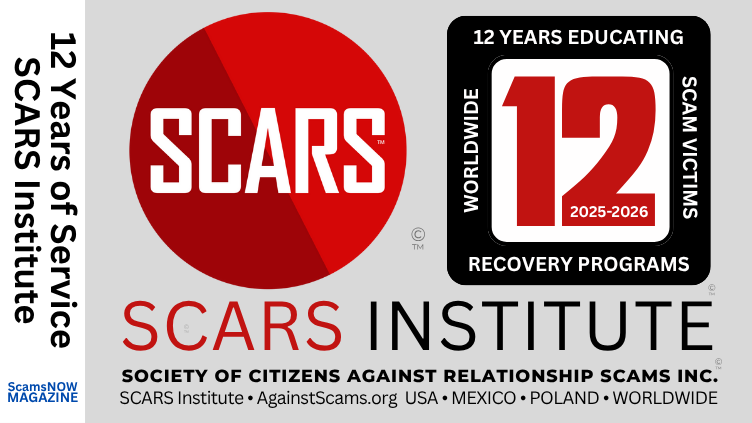

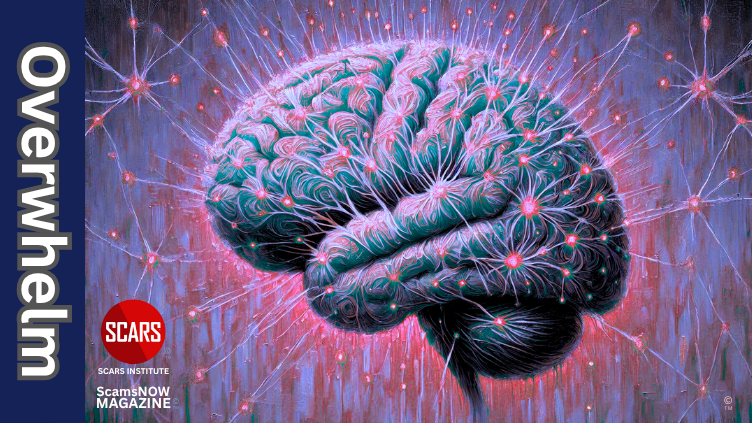
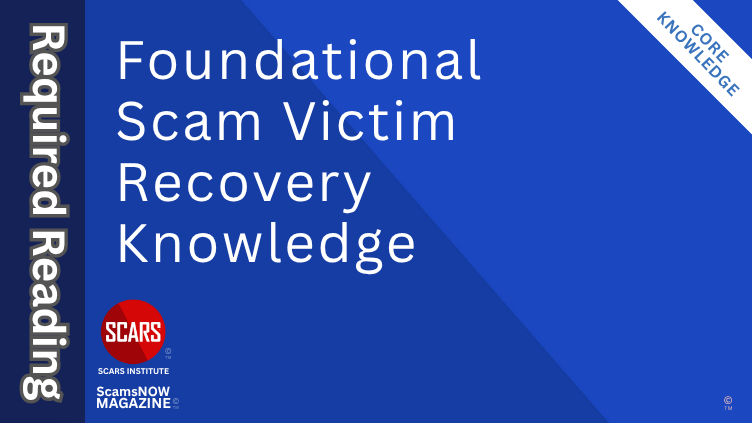
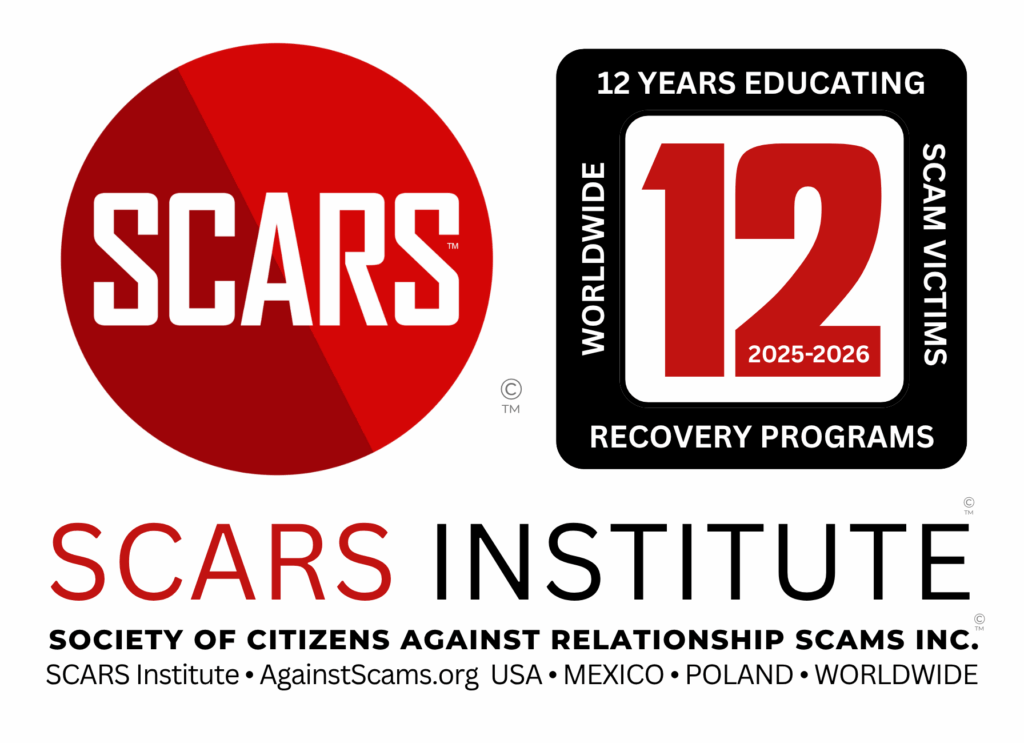










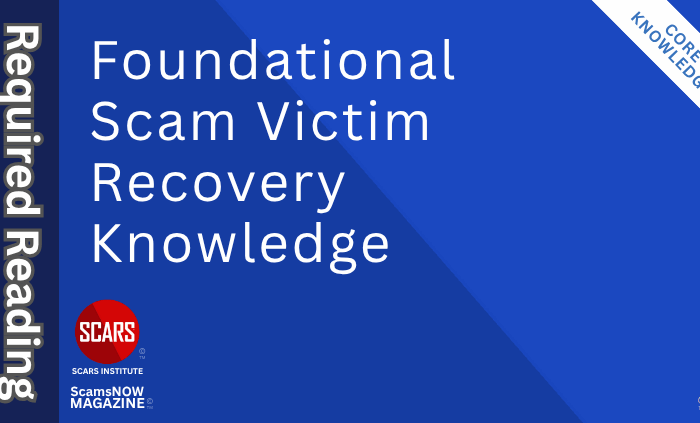







![scars-institute[1] Overwhelm - When Your Mind Feels Like a Ton of Bricks Just Fell On It - 2025](https://scamsnow.com/wp-content/uploads/2025/04/scars-institute1.png)
![niprc1.png1_-150×1501-1[1] Overwhelm - When Your Mind Feels Like a Ton of Bricks Just Fell On It - 2025](https://scamsnow.com/wp-content/uploads/2025/04/niprc1.png1_-150x1501-11.webp)
